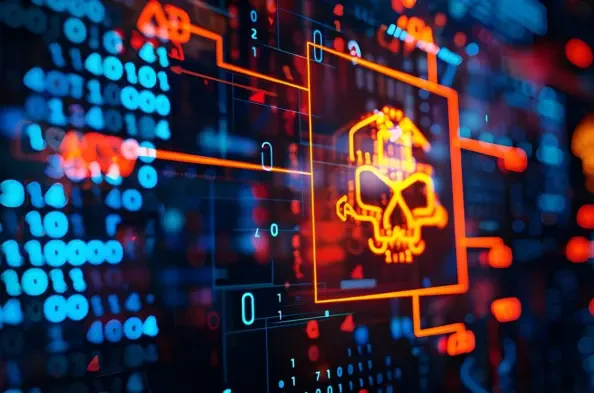In recent years, small to medium-sized businesses (SMBs) have emerged as prime targets in the relentless wave of ransomware attacks. The Verizon Data Breach Investigations Report highlights this alarming trend, revealing that ransomware constituted 44% of all cyberattacks during this period. This marks a significant increase from the previous year, with SMBs disproportionately affected compared to larger corporations. Not confined to certain geographical boundaries, the threat now encompasses a global scale, notably with an escalation of attacks within the Asia-Pacific region. Statistics show a grim picture for SMBs as cybercriminals intensify their efforts.
Persistent Challenges for Small Businesses
Increasing Frequency and Sophistication of Attacks
Ransomware attacks on small businesses have become increasingly frequent and sophisticated, highlighting a disturbing trend that transcends borders. Cybercriminals have strategically targeted these businesses due to typically weaker security infrastructures compared to larger enterprises. Notably, the report indicates that 88% of ransomware incidents involved SMBs, a stark contrast to the 39% affecting bigger companies. This surge is largely attributed to cybercriminals perceiving SMBs as more vulnerable and lucrative targets. In the face of these escalating threats, the need for robust cybersecurity measures has never been more critical for these businesses.
Beyond the mere frequency of attacks lies a troubling escalation in their sophistication. Cybercriminals continually adapt and evolve their methods, bringing newer technologies and techniques to bear on unsuspecting businesses. Small enterprises often lack the necessary resources to keep pace with these developments, leaving significant vulnerabilities. Consequently, the ransomware threat shows no signs of abating, urging SMBs to prioritize the enhancement of their defensive strategies. The growing complexity of these attacks demands that businesses remain vigilant, constantly updating and refining their security frameworks to counteract this pervasive threat.
Financial Implications and Changing Ransom Dynamics
Financial repercussions of ransomware attacks have also witnessed a remarkable shift, impacting how small businesses approach these cyber threats. While the median ransom payments have declined to $115,000 from $150,000, the pattern suggests a more complex dynamic at play. Many organizations now choose to refuse payment, a testament to increasing resilience and an improved understanding of the futility of yielding to extortion demands. Nearly two-thirds of businesses now stand firm against paying ransoms, signaling a pivotal change in how victims respond to these cyber invasions.
Despite declining ransom demands, the financial implications for SMBs extend beyond direct payments. Beyond the ransom itself, significant costs arise from disrupted operations and the urgency to restore compromised systems. The ripple effect of an attack can handicap a business for extended periods, demanding resources and time to recuperate. Acknowledging these broader implications, businesses are urged to develop comprehensive response and recovery plans, minimizing downtime and ensuring continuity in operations. These strategic measures prove crucial in confronting the multifaceted influence of ransomware on SMBs’ financial health.
Expanding Threat Landscape
The Role of State-Sponsored Actors
In the evolving landscape of cyber threats, the involvement of state-sponsored actors presents a formidable challenge for businesses of all sizes. Around 17% of confirmed breaches involved espionage, with the Asia-Pacific region hosting the highest concentration of these occurrences. These actors not only harness sophisticated tools but also pursue a dual agenda—blurring the lines between financial gain and political objectives. Their complex motives introduce a layer of unpredictability to the cybersecurity threat matrix, heightening concerns for businesses globally.
State-sponsored cyber activities reveal a troubling mix of objectives, as over a quarter of these incidents had combined financial and espionage motives. This fusion of aims complicates the defensive landscape for organizations, as they need to protect against unconventional, multi-faceted attacks. Understanding these motivations is paramount, as it informs the development of comprehensive cybersecurity strategies that anticipate the diverse nature of these threats. An emphasis on strengthening defenses against such state-sponsored activities becomes imperative as businesses contend with actors driven by complex, multi-dimensional goals.
Industry-Specific Perspectives
An analysis across different sectors further delineates how ransomware and cyber threats manifest uniquely, depending on the industry. For instance, sectors like administration and wholesale trade face a heightened risk from financially motivated cyberattacks, underscoring a trend wherein attackers select targets based on perceived vulnerabilities and potential financial gain. Conversely, the mining, utilities, and information sectors grapple with threats that lean more towards espionage-centric breaches, revealing a targeted approach driven by particular objectives.
These industry-specific insights emphasize the necessity for tailored security measures that cater to the unique vulnerabilities within distinct sectors. Recognizing that threat landscapes vary across industries empowers businesses to adopt specific strategies that address the nuanced challenges they face. This approach enables organizations to construct fortified defenses that maximize their resilience against incursions, safeguarding their operations effectively. Such targeted strategies are essential in navigating the complex, industry-specific cyber threat environments that pose relentless challenges today.
Enhancing Preparedness
In the past few years, small to medium-sized businesses (SMBs) have increasingly become primary targets in the ongoing surge of ransomware attacks. According to the Verizon Data Breach Investigations Report, ransomware has surged, accounting for 44% of all cyberattacks within this period. This marks a noteworthy rise from the prior year, with SMBs facing a greater risk compared to larger companies. The threat of ransomware isn’t limited to any specific region; rather, it has grown to a global issue. It’s especially noticeable in the Asia-Pacific area, which has seen a marked increase in attacks. This worrying trend highlights how cybercriminals have intensified their efforts against SMBs, capitalizing on their often-limited defenses. As these enterprises grapple with mounting cybersecurity challenges, the likelihood of falling victim to such attacks continues to rise. Consequently, SMBs must bolster their cybersecurity measures to safeguard their data and operations from being disrupted by these malicious actors.






